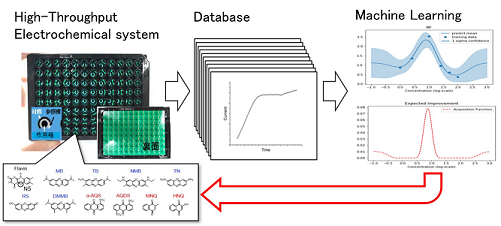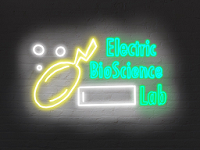
Research Activities
Understanding of "Electric Bacteria" Living with Electrode Materials to Develop Technology
All life on Earth is sustained and operated by electron transfer reactions. However, precisely capturing the energy state of the cells surrounded by insulating lipid membranes is difficult. In recent years, it has become clear that many bacteria are actually "electric bacteria" that use conductive nanoparticles, small redox molecules, and membrane enzymes as transmembrane electron carriers and have a variety of mechanisms to exchange electrons with minerals outside the cell. By understanding and mimicking these mechanisms, we aim to develop materials and technologies for efficient access to the inside of cells, which will lead to the creation of innovative medical, environmental, and energy technologies.
Specialized field / research target
Okamoto laboratory conducts (1) basic bio-research on electro-bacteria by combining electrochemistry, microbiology, and materials science, and (2) data science-driven material discovery using our high-throughput electrochemical system to improve the efficiency of bio-power generation and electrosynthesis, inhibit microbially induced iron corrosion and controlling the human bacterial flora. In particular, we are the pioneer for researching the electrochemical control of harmful bacteria.
Understanding the mechanism of extracellular electron transfer by electrogenic bacteria:

Data-driven material discovery using a high-throughput measurement system:

Applications of electrochemical microbial science: Exploration of microbial iron corrosion-related substances and materials
Electric bacteria provide benefits such as power generation and material synthesis when used as electrocatalysts but also mediate reactions that are harmful to us in the environment and the human body. For example, iron-corrosion bacteria accelerate anaerobic iron corrosion by directly extracting electrons from iron, causing enormous economic losses and environmental pollution due to pipeline accidents. Understanding and controlling the electron uptake mechanism of iron corroding bacteria will lead to the development of materials and corrosion sensors
that can delay anaerobic iron corrosion. Our research has also revealed the electrogenic properties of various pathogenic bacteria, and we are developing technologies to detect and inhibit bacterial activity by electricity.






